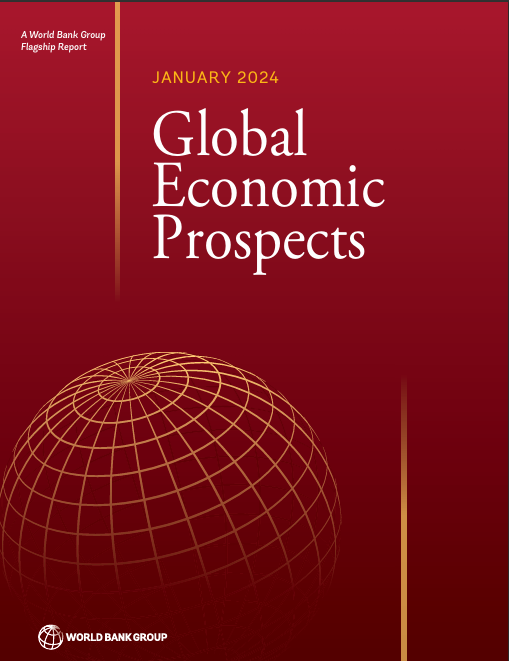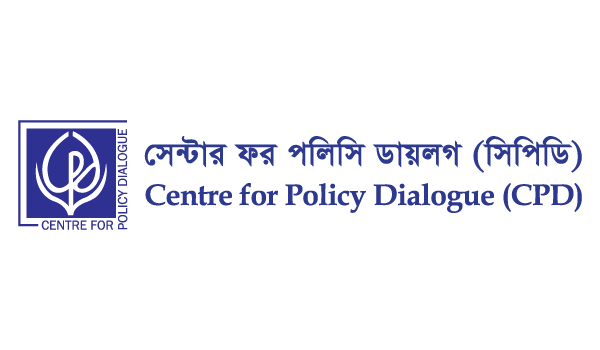It offers an in-depth analysis of the upcoming year’s global economic outlook. It indicates a potentially weak half-decade performance in the global economy, the worst in 30 years, with growth rates declining for the third year. The report sheds light on developing economies’ challenges, especially considering the slow growth, stagnant global trade, and tight financial conditions. Global Economic Prospects 2024
- Slowing Growth: Following a slight rebound in 2023, global growth will decelerate to 2.4% in 2024. This sluggish pace reflects ongoing challenges like:
- Geopolitical tensions: The war in Ukraine and other conflicts disrupt supply chains and trade flows, impacting economic activity.
- High inflation: Persistent inflation driven by rising energy and commodity prices erodes purchasing power and dampens consumer spending.
- Rising interest rates: Central banks are raising interest rates to combat inflation, which can hinder investment and economic growth.
While global recession risks decrease, growing geopolitical tensions present new short-term risks. The report emphasizes the need for significant policy changes to mitigate the economic slowdown and avoid further issues, particularly in developing countries. It also emphasizes the necessity of implementing reforms to encourage investment, reinforce fiscal policies, and navigate the complex economic environment to avert a decade of lost opportunities and economic stagnation.
Overview
Chapter 1 Global Outlook
Provides a comprehensive overview of the global economic prospects for 2024. Firstly, it presents a projected global economic growth rate of 4.2% for the year, emphasizing the recovery from the COVID-19 pandemic and associated challenges and risks. Furthermore, it stresses the importance of policy actions to support recovery, manage inflation, and navigate global economic uncertainties. Lastly, it discusses the impact of rising energy, food prices, and geopolitical tensions and underlines the need for sustainable and inclusive growth strategies.
- Developed Economies: These economies are expected to face a sharper contraction in growth compared to 2023, struggling with high debt burdens and tighter monetary policy.
- Emerging Market and Developing Economies (EMDEs): EMDEs are also facing a slowdown, with growth projected at 3.9% in 2024. However, some resource-rich economies might benefit from higher commodity prices.
- Low-Income Countries: These countries face a particularly challenging situation. The pandemic’s lingering effects and rising food and energy prices threaten to reverse progress in poverty reduction.
Chapter 2 Regional Outlooks
Delivers valuable insight into various regions’ economic prospects, highlighting that long-term growth expectations remain robust, primarily driven by demographic dividends. However, a notable shift towards older worker cohorts underscores the need to boost the labor supply and actively promote female workforce participation to enhance economic growth.
In 2024, per capita income growth is forecasted to decline, presenting potential risks, including heightened energy and food prices, geopolitical issues, and election uncertainties. Despite these challenges, encouragingly, the region’s poverty reduction efforts are anticipated to persist. Notably excluding India, only modest regional per capita income growth is projected. The region’s economic outlook presents a balanced mix of opportunities and risks.
Lastly, it employs cross-sectional regressions to examine country-specific factors like institutions, policy variables, commodity dependence, and per capita GDP significantly influencing fiscal policy volatility.
East Asia and the Pacific
The outlook for East Asia and the Pacific highlights a projected growth rate of 5.1% in 2024, supported by strong domestic demand and a gradual recovery in external demand. Risks include the potential for a sharper-than-expected global economic slowdown and geopolitical tensions affecting trade and investment.
Europe and Central Asia
In Europe and Central Asia, economic growth is expected to reach 3.6% in 2024, driven by robust domestic demand and a recovery in external demand. Risks to the outlook include geopolitical tensions, high inflation, and potential financial market volatility.
Latin America and the Caribbean
The economic outlook for Latin America and the Caribbean points to a growth rate of 2.9% in 2024, supported by improving external demand and domestic consumption. However, high debt levels, political uncertainty, and social unrest could hinder growth prospects.
Middle East and North Africa
The Middle East and North Africa region is projected to see economic growth of 3.4% in 2024, driven by recovering oil prices and ongoing economic reforms. Risks include geopolitical tensions, security challenges, and the Ukraine conflict’s impact on energy prices.
South Asia
South Asia is expected to maintain robust economic growth, with a projected rate of 5.6% in 2024, driven by strong domestic demand and improving external demand. Risks include high inflation, fiscal challenges, and geopolitical uncertainties.
Sub-Saharan Africa
It is forecasted to experience a rebound in growth to 3.8% in 2024, with a further increase to 4.1% in 2025. Challenges include elevated living costs, political instability, high debt burdens, and limited progress in reducing extreme poverty. Risks to the outlook include global and regional instability, adverse weather events, and increased defaults on public debt.
Chapter 3 The Magic of Investment Accelerations
Begins by focusing on periods characterized by sustained increases in investment growth. A comprehensive analysis examines investment accelerations in 104 economies from 1950 to 2022, considering their macroeconomic correlates, such as capital accumulation, total factor productivity (TFP) growth, and employment growth. Importantly, these factors are key contributors to output growth. The chapter then underscores the role of investment in driving potential output growth and highlights the need for resilient and low-carbon growth pathways.
This need is especially crucial for emerging markets and developing economies (EMDEs) that have unfortunately faced investment growth slowdowns since the global financial crisis. Furthermore, it explores policy interventions that can stimulate investment accelerations and contribute to associated macroeconomic and development outcomes.
Chapter 4 Fiscal Policy in Commodity Exporters: An Enduring Challenge
Discusses fiscal policy’s role in commodity-exporting emerging markets and developing economies (EMDEs). It specifically looks at the implications of fiscal policy procyclicality and volatility, particularly in the face of challenges posed by commodity price fluctuations. The study differentiates between the fiscal policy cyclicality and volatility in commodity-exporting EMDEs and other EMDEs.
It then explores how these factors have influenced economic growth in the former. Furthermore, it considers potential policy interventions that could mitigate procyclicality and volatility, thus enhancing the quality of fiscal policy. By thoroughly examining these fiscal policy challenges and potential policy solutions, this study contributes to the literature, providing insights that could promote fiscal stability and economic growth in commodity-exporting EMDEs.
Urgent Action Needed
The GEP 2024 calls for urgent action at various levels to address these challenges:
- Policymakers: Governments need to prioritize policies promoting economic stability and long-term growth. This includes investing in infrastructure and social safety nets, supporting innovation, and fostering a business-friendly environment.
- International Cooperation: Collaboration on global health, climate change, and trade is crucial to address shared challenges and foster a more stable and sustainable global economic system.
- Building Resilience: Building national and regional resilience to external shocks is essential. This includes diversifying economies, strengthening social safety nets, and improving preparedness for natural disasters and other challenges.




